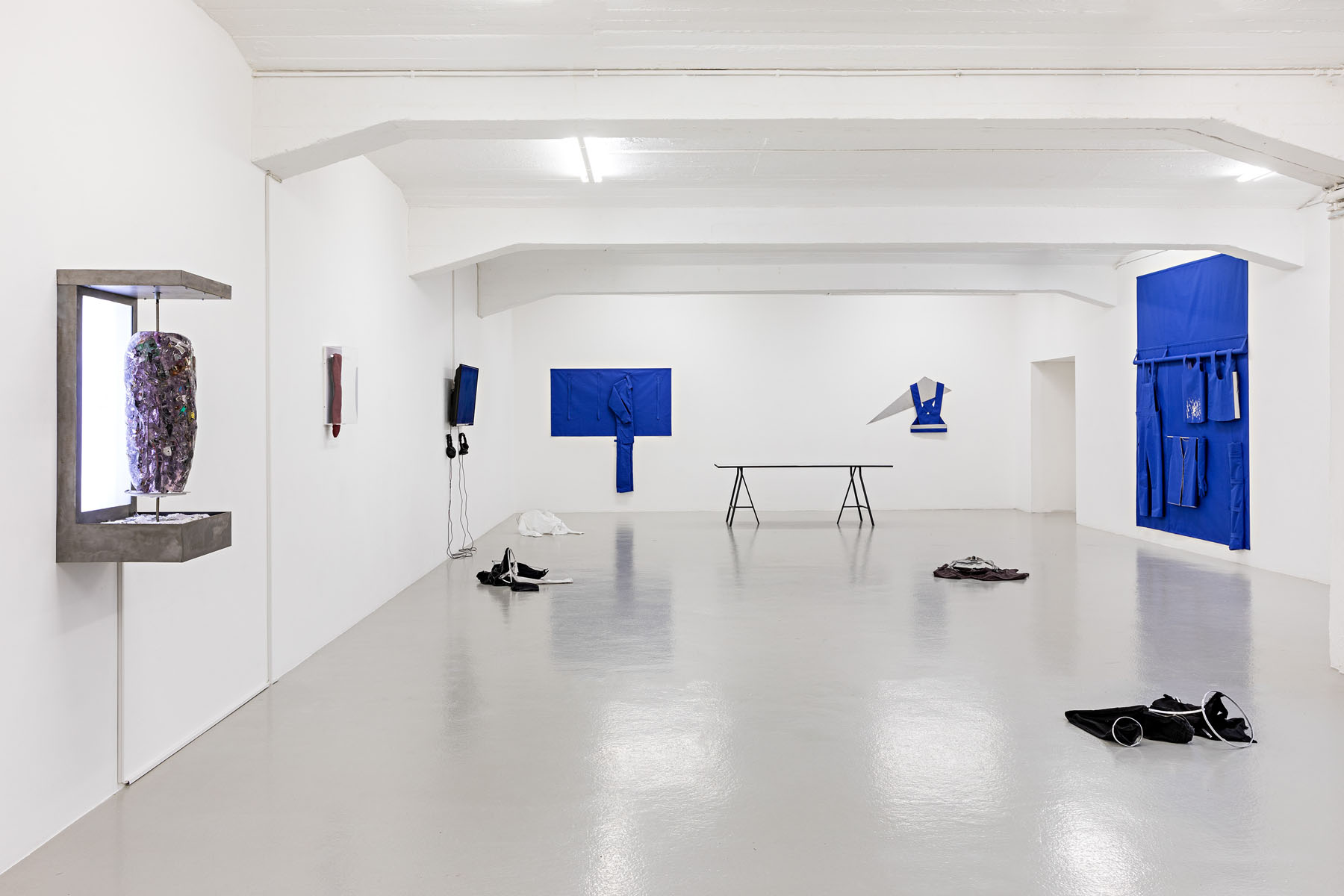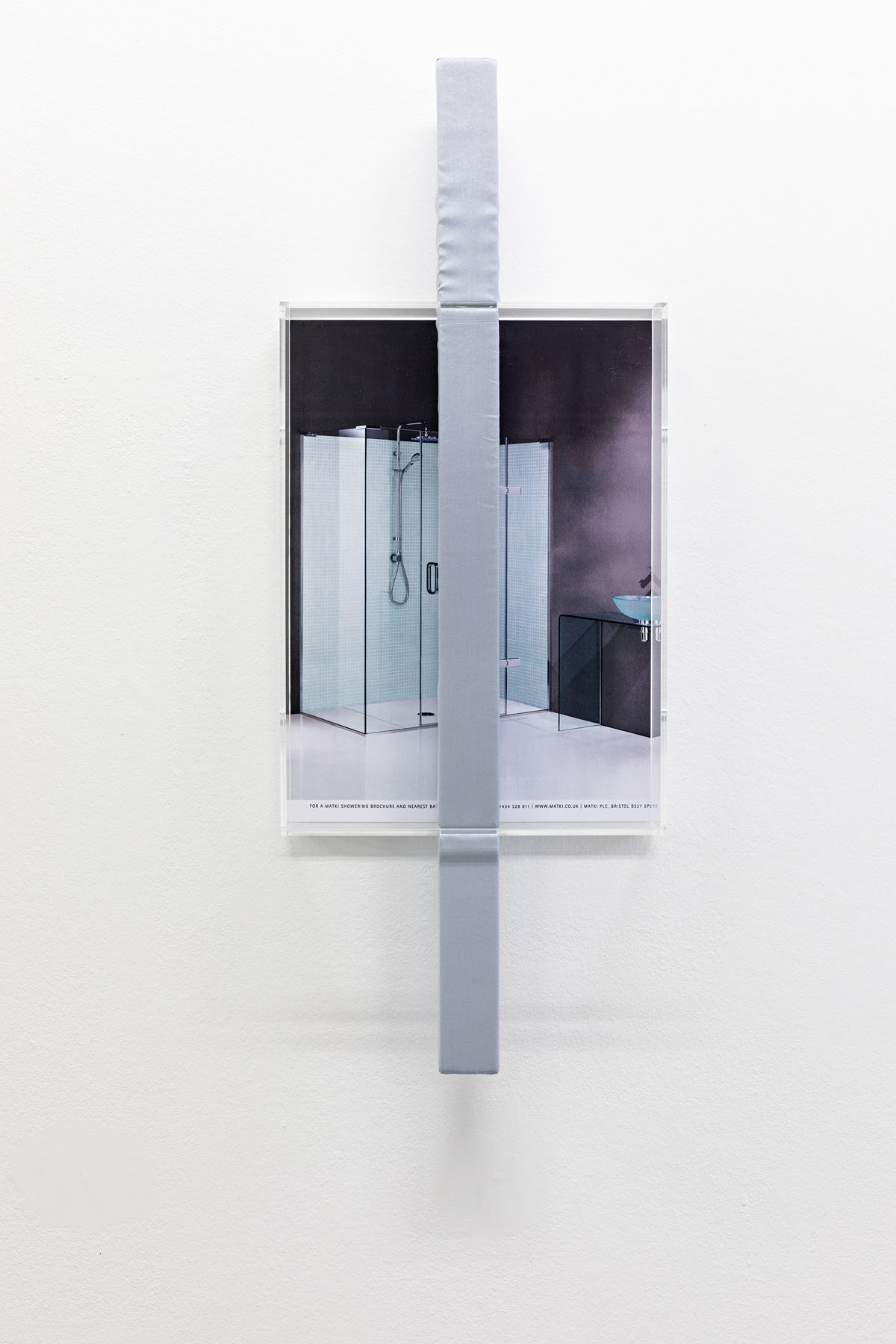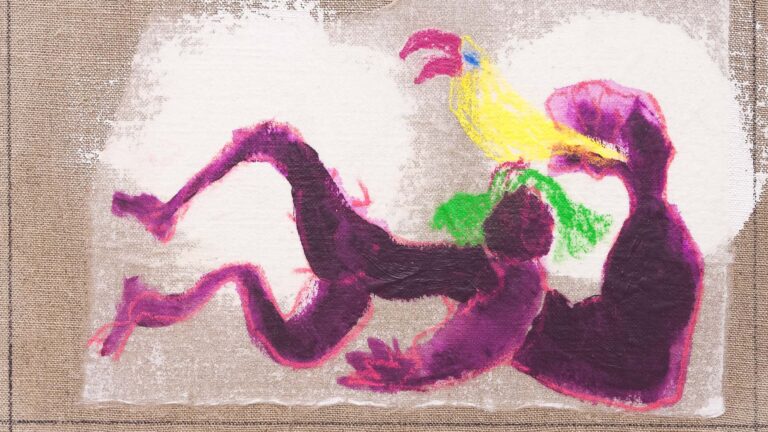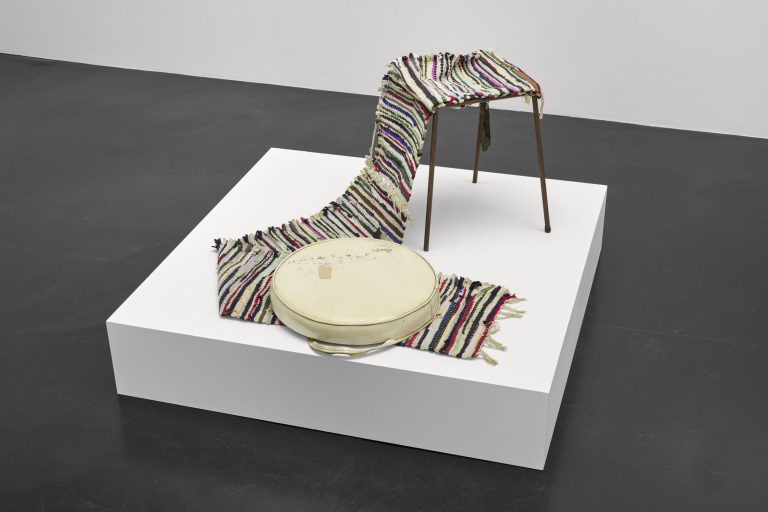Artists: Gillian Brett, Lisa Herfeldt, Fermín Jiménez Landa, Grażyna Roguski, Beny Wagner, Sara Wahl
Exhibition title: High-cycle Fatigue
Curated by: Nadja Quante
Venue: Künstlerhaus Bremen, Bremen, Germany
Date: February 22 – September 6, 2020
Photography: all images copyright and courtesy of the artists and Künstlerhaus Bremen
The group exhibition High-cycle Fatigue presents works that examine economies and production cycles in regards to technology, nature and human beings. The title of the exhibition refers to the fatigue of a material after its multiple use, but can also be understood metaphorically as our own fatigue or a fatigue of nature in the rampant cycles of capitalism. From different perspectives and in different media, the selected works by Gillian Brett, Lisa Herfeldt, Fermín Jiménez Landa, Grażyna Roguski, Beny Wagner and Sara Wahl examine the tensions between faith in progress and scarcity of resources, between creative will and limits of competences. The works explore entanglements between computer and food technology, agriculture and perception, the visual language of fashion design and the historical conditions of production in the cotton industry as well as between bodies and the traces they leave in the material.
In her series Smart food, Gillian Brett draws connections between areas such as food technology and the production conditions of the technology sector. For her work Smart food: better for you and the planet #kebab (2018), she has created a full-size kebab made of recycled computer parts and resin that is presented rotating in front of a glowing lightbox. Brett points to the ambivalence of food technology between the pursuit of healthy eating and an ideology that sees the body as an apparatus to be optimized in the name of productivity. Lisa Herfeldt’s collages on display are based on full-page advertisements from glossy interior design magazines. The artist presents them in protective plexiglass boxes that seal off the living spaces like a “gated community”. She adds textile proliferations – sausage-like fabric sculptures – to the images that protrude beyond the frames and seem to threaten the idyllic lifestyle. The sterilely designed home is overwhelmed by the organically thriving mutations that expose new lines of flight. The retreat into the private sphere finds its own way back into the public sphere.
The video Untitled (Sumatra) (2019) by Fermín Jiménez Landa shows the repeated felling of palm trees in an almost hypnotic manner. The slow movement of the falling trees is accompanied by the sound of leaves and a playful synthesizer melody. While at first glance it seems like an aggressive act, in reality it is a reforestation measure. Where palm oil was once produced, there will be indigenous jungle in the future.
Grażyna Roguski’s textile objects hosen (2018) are prosthetic-like pieces of used clothing that explore the boundaries between sculpture, performance and fashion. The artist is interested in the human body within social power relations, especially with regard to social choreographies that are shaped by gender and social classes. By processing, stiffening or expanding recycled clothes, she creates new body-forms that allow for new identities. Her recourse to existing and worn garments refers to decay and damage as inherent elements of human existence. For the finissage, the sculptures are put into motion in a choreography of ritualized movements.
Beny Wagner’s essayistic video work Eye Farm (2016) establishes connections between our ability to see and the contemporary representation of agriculture through drone cameras and hyper-realistic, computer-animated landscapes. Wagner starts from reciprocal processes between the human eye and the plants we grow, consume and digest. In his video, the artist combines historical and contemporary representations of wheat with its cultivated crops, shows relations between the metabolism of a wheat plant and human metabolism, and points to the political implications of this interrelation on human and non-human ways of seeing.
In the installation Ghostwriter (2019), Sara Wahl deals with the historical conditions of the cotton industry, which are significant for global capitalism, and the visual language of jeans and workwear. In wall installations that evoke associations between locker room and wall newspaper or bulletin board, Wahl presents formal abstractions of workers’ clothing, such as the boiler suit or dungarees, and of artificially imitated traces of physical labor as used in contemporary fashion. Wahl plays with the signs, connotations and gestures of workwear and makes its immanent ideology readable.
The selected works in High-cycle Fatigue play – both formally and in their materiality – with the relation between consumption and production, design and wear and their suspension.
Exhibition view, High-cycle Fatigue, Künstlerhaus Bremen, 2020, Photo: Fred Dott
Exhibition view, High-cycle Fatigue, Künstlerhaus Bremen, 2020, Photo: Fred Dott
Exhibition view, High-cycle Fatigue, Künstlerhaus Bremen, 2020, Photo: Fred Dott
Lisa Herfeldt: Salon Oriental, 2015, Installation view, Künstlerhaus Bremen, 2020, Photo: Fred Dott
Fermín Jiménez Landa: Untitled (Sumatra), 2019, Installation view, Künstlerhaus Bremen, 2020, Photo: Fred Dott
Fermín Jiménez Landa: Untitled (Sumatra), 2019, video still
Fermín Jiménez Landa, Untitled (Sumatra), 2019, video, 4:21 min
Lisa Hefeldt: L’escalier, 2015, Installation view, Künstlerhaus Bremen, 2020, Photo: Fred Dott
Lisa Herfeldt: Cuisine, 2015, Installation view, Künstlerhaus Bremen, 2020, Photo: Fred Dott
Exhibition view, High-cycle Fatigue, Künstlerhaus Bremen, 2020, Photo: Fred Dott
Grażyna Roguski: hosen, 2018, Installation view, Künstlerhaus Bremen, 2020, Photo: Fred Dott
Gillian Brett: Smart food: better for you and the planet #kebab, 2018, Installation view, Künstlerhaus Bremen, 2020, Photo: Fred Dott
Gillian Brett: Smart food: better for you and the planet #kebab, 2018, Installation view, Künstlerhaus Bremen, 2020, Photo: Fred Dott
Exhibition view, High-cycle Fatigue, Künstlerhaus Bremen, 2020, Photo: Fred Dott
Exhibition view, High-cycle Fatigue, Künstlerhaus Bremen, 2020, Photo: Fred Dott
Lisa Herfeldt: Toilet, 2015, Installation view, Künstlerhaus Bremen, 2020, Photo: Fred Dott
Exhibition view, High-cycle Fatigue, Künstlerhaus Bremen, 2020, Photo: Fred Dott
Exhibition view, High-cycle Fatigue, Künstlerhaus Bremen, 2020, Photo: Fred Dott
Beny Wagner: Eye Farm, 2016, Installation view, Künstlerhaus Bremen, 2020, Photo: Fred Dott
Beny Wagner, Eye Farm, 2016, HD video, 20 min
Beny Wagner: Eye Farm, 2016, video still
Beny Wagner: Eye Farm, 2016, video still
Beny Wagner: Eye Farm, 2016, video still
Grażyna Roguski: hosen, 2018, Installation view, Künstlerhaus Bremen, 2020, Photo: Fred Dott
Grażyna Roguski: hosen, 2018, Installation view, Künstlerhaus Bremen, 2020, Photo: Fred Dott
Exhibition view, High-cycle Fatigue, Künstlerhaus Bremen, 2020, Photo: Fred Dott
Exhibition view, High-cycle Fatigue, Künstlerhaus Bremen, 2020, Photo: Fred Dott
Exhibition view, High-cycle Fatigue, Künstlerhaus Bremen, 2020, Photo: Fred Dott
Sara Wahl: Ghostwriter (The Blue Line), Latzhose, Zinn Tank Top, Tank Top, Weste, Handschuh, 2019, Installation view, Künstlerhaus Bremen, 2020, Photo: Fred Dott
Lisa Herfeldt: Showering, Brochure, 2017, Installation view, Künstlerhaus Bremen, 2020, Photo: Fred Dott
Grażyna Roguski: hosen, 2018, Installation view, Künstlerhaus Bremen, 2020, Photo: Fred Dott
Exhibition view, High-cycle Fatigue, Künstlerhaus Bremen, 2020, Photo: Fred Dott
Exhibition view, High-cycle Fatigue, Künstlerhaus Bremen, 2020, Photo: Fred Dott





































